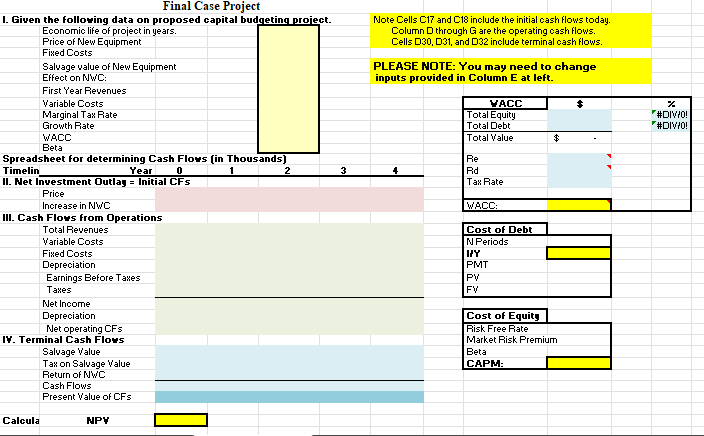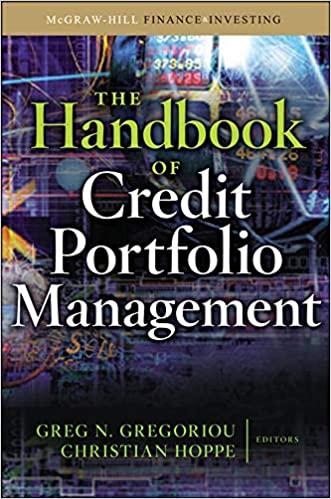Answered step by step
Verified Expert Solution
Question
1 Approved Answer
Suppose a beverage company is considering adding a new product line. Currently the company sells packaged drinks and they are considering selling a new coffee
Suppose a beverage company is considering adding a new product line.
Currently the company sells packaged drinks and they are considering selling a new coffee drink.
The coffee drink will have a selling price of $ per can. The plant has excess capacity in a
fully depreciated building to process the coffee drink. The coffee drink will be discontinued in four years.
The new equipment is depreciated to zero using straight line depreciation. The new coffee drink requires
an increase in working capital of $ and $ of this increase is offset with accounts payable.
Projected sales are cans of coffee drink the first year, with a percent growth for the following years.
Variable costs are of total revenues and fixed costs are $ each year. The new equipment costs
$ and has a salvage value of $
The corporate tax rate is percent and the company currently has shares of stock outstanding
at a current price of $ The company also has bonds outstanding, with a current price of $ The
bonds pay interest annually at the coupon rate is The bonds have a par value of $ and will
mature in twenty years.
Even though the company has stock outstanding, it is not publicly traded. Therefore, there is no publicly
available financial information. However, management believes that given the industry they
are in the most reasonable comparable Beta would be approximately
The current risk free rate in the market has been volatile with interest rate changes, but it now sits at
Management also believes the S&P is a reasonable proxy, so the expected market return is
Therefore, the cost of equity is calculated using CAPM, and the market risk premium based on the
S&P annual expected rate of return, along with the risk free rate and the given beta.
The WACC is then calculated using this information and the other information provided
above. Clearly show all your calculations for these calculations on the Blank Template tab
Calculate the WACC for the company.
Calculate the rate of debt for the company.
Calculate the cost of equity for the company.
Using the information from the problem above create a partial income statement incremental cash flows from this project in the
Blank Template worksheet using the tab below.
Final Case Project
I. Given the folloving data on proposed capital budgeting project.
Spreadsheet for determining Cash Flows in Thousands
Timelin
Year
II Net Investment Outlay Initial CFs
Frice
Increase in
III. Cash Flows from Operations
Total Revenues
Variable Costs
Fived Costs
Depreciation
Earnings Before Takes
Taxes
Net Income
Depreciation
Net operating CFs
IY Terminal Cash Flows
Salwage Value
Tax on Saluage value
Return of NC
Cash Flows
Present Value of CFs
Calcula
NPY
NPY

Step by Step Solution
There are 3 Steps involved in it
Step: 1

Get Instant Access to Expert-Tailored Solutions
See step-by-step solutions with expert insights and AI powered tools for academic success
Step: 2

Step: 3

Ace Your Homework with AI
Get the answers you need in no time with our AI-driven, step-by-step assistance
Get Started


